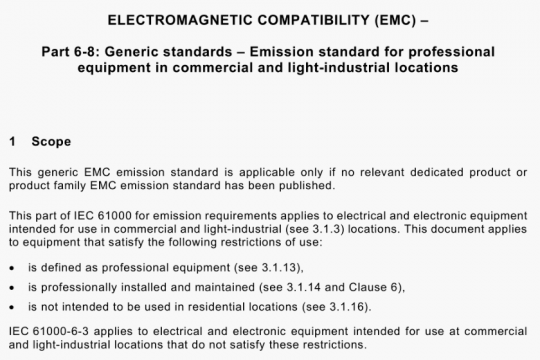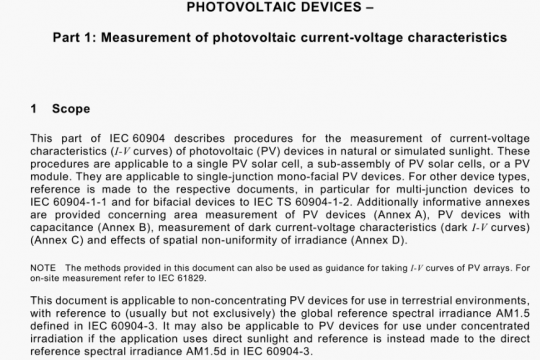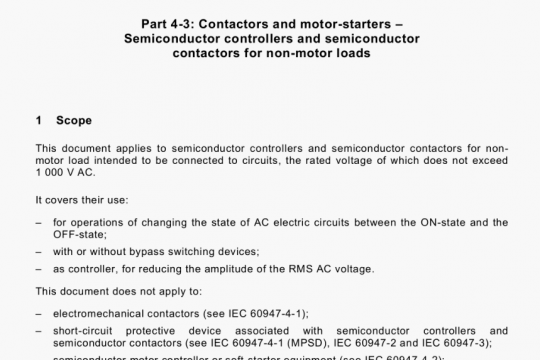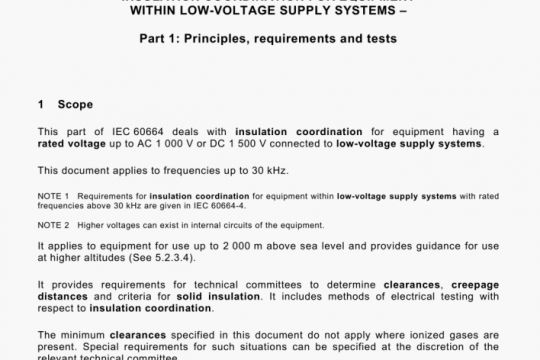IEC/TR 62655-2013 pdf free
IEC/TR 62655-2013 pdf free.Tutorial and application guide for high-voltage fuses.
The ability of different types of CL fuse to interrupt currents lower than those that produce a current-limiting action result in different classes of CL fuse. Some CL fuses are designed to interrupt only high currents (i.e. their primary function is to provide a current-limiting action). They therefore have a limited low current interrupting ability and are termed “Back-Up” fuses. They are usually used in conjunction with another device in series; such devices include switches (most commonly tripped by a striker in a “switch-fuse combination”, see 5.2.7.2), contactors. circuit breakers or another fuse having a lower current interrupting ability. It may be considered that they are “backing up” this other device and in addition to the important current-limiting function, also usually provide increased interrupting capability. This is because the series device frequently has a limited interrupting capability while Back-Up fuses can normally interrupt very high currents Le they have a very high “rated maximum breaking current”.
High-voltage fuses having the ability to interrupt low values of overcurrent as well as high short-circuit currents are classed as either “General-Purpose” or “Full-Range” types. The term “General-Purpose” (which has historical origins, being used before Full-Range fuses were introduced) does not mean that the fuse can be used for any sort of application but merely that the fuse is designed to clear low values of fault/overload current. Testing is performed by the fuse manufacturer to show that fuse-links classed as General-Purpose can clear currents down to a value that causes melting of the fuse element in 1 h or more. This means that General-Purpose fuses can be used with overload currents that will cause them to melt in times of up to one hour, but no longer. The term “Full-Range” is used for the Class of fuse designed to clear even lower values of fault/overload current; in fact any continuous current that causes the fuse element to melt must be interrupted by such a fuse. Full-Range fuses are often used in enclosures, sometimes with the enclosure at elevated temperatures; both factors can reduce the lowest current that causes them to melt, and Full-Range fuse test methods reflect this.
4.1.2.2 Current-limiting fuse terminology
There now follows an explanation of common terminology relating to fuses used in fuse standards and in this report. A fuse is defined as all the parts that form a complete device, which is everything needed to connect it into a circuit. After operation, at least some of a fuse must be replaced to return the protection to as flew” condition. The part that is replaced after operation is called the “fuse-link”, and is the part that performs the active function of current carrying and interruption. In some usage (IEEE standards for example) fuse-link refers only to the replaceable part of a distribution fuse-cutout (see 4.3.2.1.1). Current-limiting fuse-links are often termed “cartridge fuses”, This is because they are almost always cylindrical in shape and contain the fuse element surrounded by an arc absorbing filler, usually quartz sand.
A complete CL fuse may employ a fuse-base (sometimes called a fuse support or fuse- mount). This base usually consists of clips and spade terminals, which are in turn mounted on insulators. They are used with a fuse-link having ferrules that fit in the clips. Cables or bus- bars attach to the terminals. This type of fuse is still extensively in use, normally in “live-front” gear (that is equipment that would have live conductors accessible if the access doors can be opened with the equipment live). Alternatively, fuse-links may be found installed in canisters (that is relatively tight fitting enclosures) or be moulded into rubber or epoxy for use with cables in submersible/dead-front installations (“dead-front” meaning that no live conductors are exposed). They are also used under oil, either in quite elaborate fuse-holders (for ease of replacement) or in simple cradles inside transformers when they do not have to be replaced by the user (see 5.2.2.6.4).
In some cases the fuse-link is also the fuse, that is it may include all of the components necessary for connection into a circuit, e.g. if the fuse-link has tags or spade!eyebolt terminals. An example of this method of mounting is an external CL fuse that may be hung from an overhead line or mounted on a distribution fuse-cutout or transformer insulator (in which case the cutout or insulator substitutes for the “fuse base”).IEC/TR 62655 pdf download.




